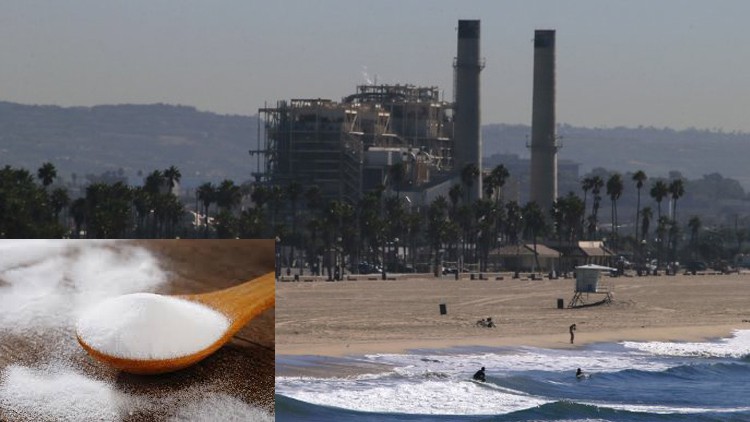
A Blueprint Towards Sustainability
☑ Understand sources of CO2 in our economy, not only from energy and transportation, but other industries
☑ What Carbon Sequestration is and how DAC (direct air capture) is different than FSC (flue stack capture)
☑ Understand the Earth’s carbon cycle and learn how the Earth sequestered carbon from its high concentrations in the Earths original atmosphere
☑ Why there is an energy penalty with all forms of carbon sequestration
☑ How desalination can be coupled with carbon mineralization to eliminate CO2 and brine disposal, store energy, and reduce salination of groundwater
In this class we discuss carbon sequestration as a means to mitigate climate change. The method promoted is carbon mineralization.
This course was developed as part of mission of the non-profit Carbon Negative Water and Energy founded by Dr. John Hoaglund. If you have benefitted from the information, please consider making a donation. If you’re part of the 98% and can’t make a donation, please massively forward the website and this course to your network … that way it might reach someone who can. More information is available at the foundation’s website linked from Dr. Hoaglund’s Udemy Instructor biography page.
The two-part course is based on two presentations, divided topically into 14 videos. The first section features a Nevada Conservation League podcast, interviewing Dr. John Hoaglund. The climate change issue, other industrial sources of carbon and how to mitigate it with carbon sequestration is discussed. The second section is an expanded version of a presentation Dr. Hoaglund delivered to the National Groundwater Association (NGWA), and details the “CNWE environmental trifecta” (see below).
Unlike the temporary biotic carbon sequestration used for “carbon offsets” (growing wetlands and forests in exchange for the “right to pollute”, i.e. emit carbon), carbon mineralization is the Earth’s permanent sink for carbon onto the seafloor. There is an energy penalty associated with all carbon sequestration methods, but by combining it with brine desalination with the processes described here, the energy invested also 1) produces freshwater, 2) produces commodities such as hydrogen gas, an energy carrier that will soon replace lithium, 3) eliminates brine disposal, 4) eliminates carbon emissions, and 5) reduces salination of groundwater by producing a bicarbonate de-icing salt to replace chloride salts.
A technical description of the three components of the “CNWE environmental trifecta” is as follows:
- Greenhouse gas (GHG) is reduced through the sequestration of carbon, achieved from flue stack capture (FSC), or direct air capture (DAC), of CO2, subsequently incorporated into solid carbonate mineral [MCO3 or MHCO3], or into increased naturally dissolved bicarbonate (HCO3) in groundwater, surface water, and oceans. Dissolved HCO3 can be incorporated into algae for biofuel, fertilizer, or feedstock production. The need for brine waste disposal is eliminated from both seawater and groundwater brine desalination operations. The most common technology for this step usually involves 1) the electrolysis of brine, producing a base MOH, and 2) the aeration of CO2 gas forming carbonic acid, which reacts with the base to produce a carbonate salt [MCO3 or MHCO3].
- Freshwater is produced from the desalination of brine, and is managed through the prevention of salinization from brine handling and road salting, as well as the treatment of the acidification of groundwater and surface waters resulting from acid precipitation and acid mine drainage. MHCO3, replacing MCl in road salting and fertilizer operations, provides “non-point” source application of the bicarbonate for the neutralization of acid precipitation. The elimination of MCl salts prevents the chloride salinization of groundwater and surface waters. MHCO3 can also be applied locally, providing “point” source application for the neutralization of acid mine drainage point sources.
- Clean energy is promoted through the production of energy carriers: lithium extracted from brines, and hydrogen produced from the electrolysis of brine. Other marketable byproducts are produced from the electrolysis process described above, which has existed for over a hundred years, and is already the standard means for the production of these compounds industrially. The marketable byproducts are NaHCO3 and various HxClx compounds, including H2, Cl2, HCl, and ClOx. The H2 can supplement the hydrogen economy. The Cl2 and ClOx compounds can be used in water sanitation. The HCl can be used in various waste digestion (dissolution) practices, particularly organic matter from agriculture (e.g. offal). HCl applied to native metals produces that metal’s chloride plus hydrogen gas.
[Throughout the discussion above, M is most commonly sodium, Na, when referring to univalent cations, and Ca or Mg when referring to divalent cations]
English
Language
Nevada Conservation League Sustainability Podcast with guest Dr John Hoaglund
What is carbon sequestration?
The Earth’s Carbon Cycle
Other Industrial sources of carbon
Stopping a Train with Our Heels?
DAC vs FSC: Getting HCO3 to the Ocean
An Environmental Trifecta: Desalination, Carbon Mineralization, and H2
An Environmental Trifecta: Dissecting the Title
How Earth Sequestered the High Carbon Concentration in its Original Atmosphere
Three Examples of Natural Carbon Sequestration
An Evolution of Thought on Hydrogen Production, Water Desalination, and C-Seq
Going to California: Putting it together in 2010
A Case Study of Desalination, CO2, and Brine Discharge
Eureka! A CO2, salt, energy, and water budget
The Energy Penalty and Other Considerations
Conclusions